History of Agile – The Influencers and Drivers of the Agile Movement
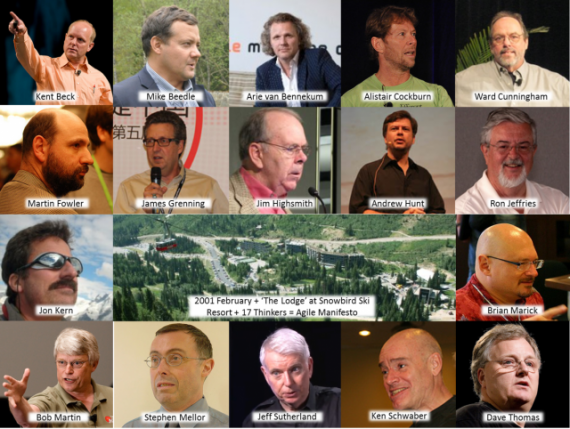

A recap of how we got to where we are now…
This next year the agile movement completes 20 years of existence. I am sure you are either using some form of agile methodology or examining the possibility of using them. But, are you aware of how the agile movement happened? Did it happen by chance or was it inevitable? Do you know what influenced the agile manifesto? Who the authors are? What are their backgrounds and what do they do now? How was the name “Agile” selected?
The Influencers
It is clear from the notes published by Jon Kern that 4 methodologies had significant influence on the manifesto – they are:
- Scrum (Jeff Sutherland and Ken Schwaber – also Mike Beedle)
- DSDM (DSDM Consortium represented by Arie van Bennekum)
- ASD (Jim Highsmith)
- XP (Kent Beck, Ward Cunningham and Ron Jeffries – Martin Fowler)
Prior to the meet all these methodologies were classified as “Lightweight Methodologies”. The meet happened as a logical consequence of an earlier get together of XP proponents organized by Kent Beck. The push for the actual meet came from Bob Martin. Here are the milestones (1992-2003) that had significant impact on the movement. Also, I have tried to attach a face to every name – hope you find it interesting.
1992 – Crystal Methods
Crystal was the starting point of the evolution of software development methodologies which ultimately resulted in what we know as Agile movement. The honor of creating Crystal goes to Alistair Cockburn. The methodology was named “Crystal” only in 1997. Crystal can be applied to teams of up to 6 or 8 co-located developers working on systems that are not life-critical. You can see the seeds of Agile manifesto in Crystal because it focuses on – (1) Frequent delivery of usable code to users, (2) Reflective improvement and (3) Osmotic communication preferably by being co-located. Here is a post by him on “Notes on the writing of the agile manifesto.” He is a consulting fellow at Humans and Technology which he had founded.
1993 – Refactoring
Refactoring was coined by Bill Opdyke in a paper titled “Creating Abstract Superclasses by Refactoring”.This is how Wikipedia describes code refactoring: Code refactoring is a “disciplined technique for restructuring an existing body of code, altering its internal structure without changing its external behavior”, undertaken in order to improve some of the nonfunctional attributes of the software. He is now the Architecture Lead at JPMorgan Chase.
1994 – Dynamic Systems Development Method
DSDM, unlike all the other items listed in this post, was created by a Consortium. The consortium was an association of vendors and experts in the field of software engineering. The objective was to “jointly developing and promoting an independent RAD framework” by combining their best practice experiences.There isn’t any individual who can be credited with the creation of DSDM but Jennifer Stapleton, as one of the founder member of DSDM consortium was instrumental in the initial compilation of thoughts.She is now a management consultant in UK.
Arie van Bennekum, one of the authors of the agile manifesto has been actively involved in DSDM and the DSDM Consortium since 1997.DSDM focuses on the following 8 principles of (1) Focus on the business need, (2) Deliver on time, (3) Collaborate, (4) Never compromise quality, (5) Build incrementally from firm foundations, (6) Develop iteratively, (7) Communicate continuously and clearly and (9) Demonstrate control. Again, you can see the seeds of agile manifesto! He is now a Senior Consultant, Program manager, Project Manager, Facilitator, Trainer, Coach, Mentor, Teacher etc. in Netherlands.
Scrum1995 – Scrum and Pair Development

SCRUM was jointly created by Jeff Sutherland and Ken Schwaber who presented a paper describing it at OOPSLA ’95 in Austin, Texas.Jeff Sutherland is the CEO at Scrum, Inc. Ken Schwaber is a founder of Scrum.org.
Mike Beedle has been one of the very early adopters on Scrum and has introduced Scrum to many organizations since the mid-90′s. As you know Scrum has practically been the de facto standard for agile. He is now the Founder and CEO at Enterprise Scrum.
Pair Development
Pair Development as a concept was simultaneously but independently written about by more than one person. Jim Coplien published a paper titled “A Development Process Generative Pattern Language” which contained a pattern “Developing in Pairs.” He is a Lean and Agile Software Development Coach in Denmark.
Larry Constantine talked about “Dynamic Duos” in his book “Constantine on Peopleware” published in the same year. This concept went on to become an integral part of Extreme Programming. Though a lot of research has been conducted to show the effectiveness of pair programming, the concept or philosophy does not really reflect in the Agile Manifesto. He is now a Novelist, and University Professor in USA.
1997 – Feature Driven Development

Feature Driver Development was initially devised by Jeff De Luca. The best practices of FDD are, (1) Domain Object Modeling, (2) Developing by Feature, (3) Individual Class (Code) Ownership, (4) Feature Teams, (5) Inspections, (6) Configuration Management, (7) Regular Builds and (8) Visibility of progress and results. Interestingly, “Individual Class (Code) Ownership” goes against the concept of joint code ownership which is considered a key practice today. He is now the President at Nebulon.
However, the FDD process was explained to the world through the publication of the book “Java Modeling in Color with UML: Enterprise Components and Process” which he co-authored with Peter Coad. He had built and sold TogetherSoft to Borland. Currently, he is into many things other than Agile!
Jon Kern, one of the authors of the agile manifesto, had closely worked with both Jeff De Luca and Peter Coad and had helped shape the charter on FDD. Here are his “Agile Manifesto Notes – Feb 2001, Snowbird, Utah“. These have been dug out and hosted by Jeff Sutherland. He describer himself as Software Development Quarterback and is associated with multiple companies.
Adaptive Software Development1999 – Many Things Happened
Jim Highsmith formalized the Concept of Adaptive System Development and published a book with the same name. The idea grew out of his work on Rapid Application Development methodologies. He proposed a three-phase lifecycle of – (1) Speculation, (2) Collaboration, and (3) Learning. He has also written the history or the story behind the formulation of the agile manifesto. He is now an Executive Consultant at ThoughtWorks.
The Pragmatic Programmer
Andrew Hunt published the book The Pragmatic Programmer: From Journeyman to Master. The book laid out characteristics of a pragmatic programmer as the one who is (1) an Early adopter / fast adapter, (2) Inquisitive, (3) Critical thinker, (4) Realistic, and (5) Jack-of-all-trades. He describes himself as Pragmatic /\ndy — speaker, author, publisher!
The co-author of the book was Dave Thomas. If you go through the detailed list of recommendation you will see its influence on the manifesto. Here is his recollection of what transpired in the meet in 2001 February – “Some Agile History“. He describes himself as a Software Visionary!
Extreme Programming, User Stories, Release Planning and Continuous Integration
While Kent Beck was working at Chrysler he developed the concept of Extreme Programming. He published the method in 1999 as a book – Extreme Programming Explained. As a part of Extreme Programming, he also introduced the concept of User Stories and Release Planning. The methodology specifies best practices for planning, managing, designing, coding, and testing. He is at Facebook and calls himself a Programmer!
Apart from being a collaborator for the in XP, Ward Cunningham is also the creator of the Wiki. Apart from being the Founder of Cunningham & Cunningham, he is also the CTO at CitizenGlobal.
Ron Jeffries was also the collaborator and the three of them together are considered as the founder of XP.His biography page states that he developing software longer than most people have been alive.
Though some people think that Martin Fowler introduced the term Continuous Integration in reality CI has also been coined by Kent Beck. Here is his recollection of the “Writing The Agile Manifesto.” He calls himself an author and speaker and is working with Thoughtworks.
2000 – Events leading up to the Manifesto
Bob Martin took the initiative to get the ball rolling on organizing the historic meeting to be held on February 2001 at “The Lodge” at Snowbird ski resort in the Wasatch Mountains of Utah. He is the Owner of Uncle Bob Consulting.
2001 – Agile Manifesto
2001 February + ‘The Lodge’ at Snowbird Ski Resort + 17 Thinkers = Agile Manifesto

Kent Beck, Mike Beedle, Arie van Bennekum, Alistair Cockburn, Ward Cunningham, Martin Fowler, James Grenning, Jim Highsmith, Andrew Hunt, Ron Jeffries, Jon Kern, Brian Marick, Bob Martin, Stephen Mellor, Ken Schwaber, Jeff Sutherland, and Dave Thomas
2002 – More Agile Concepts
Test Driven Development
For TDD the credit goes to Kent Beck. The concept of Test Driven Development also originated from XP test-first approach. It was given a shape later by Kent Beck through the book Test Driven Development: By Example.
Planning Poker
The concept of Planning Poker was formulated by James Grenning. Here is the original paper. He is the Founder of Renaissance Software Consulting.
What about Brian Marick and Stephen Mellor?
He is the Owner at Exampler Consulting and calls himself Software consultant, specializing in agile methods with a testing slant.
He calls himself a “Freeter”, a Japanese word, derived from English, that means “free agent.” He resides in Zimbabwe.
2003 – Lean Software Development
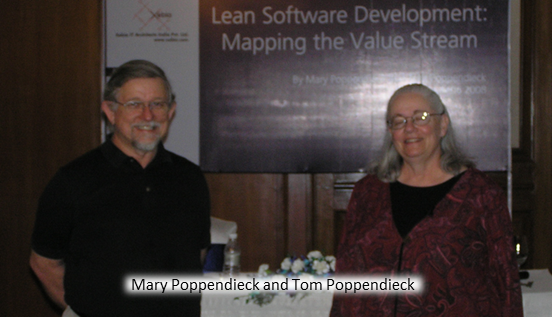
Is Lean Software Development an extension to agile methodology? Should we look at it as something distinct from agile? Should it find a place in this post? I have included it for the primary reason that many agilists consider it to be one of the future directions of the agile movement. Anyway; the term was coined by Mary Poppendieck and Tom Poppendieckin 2003. It is an adaptation of lean manufacturing principles and practices to software development. There are seven principles – (1) Eliminate waste, (2) Amplify learning, (3) Decide as late as possible, (4) Deliver as fast as possible, (5) Empower the team, (6) Build integrity in and (7) See the whole. Amplify learning, deliver as fast as possible, empower the team, etc. goes very well with agile principles.





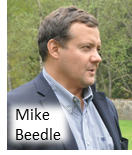
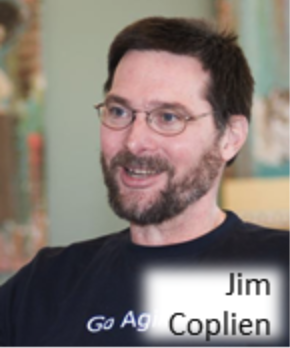





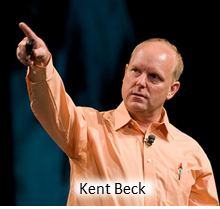

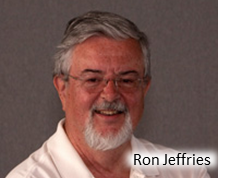

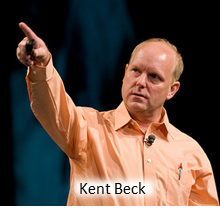
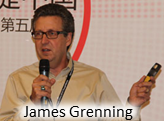
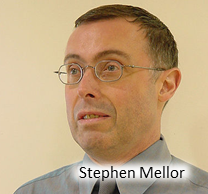


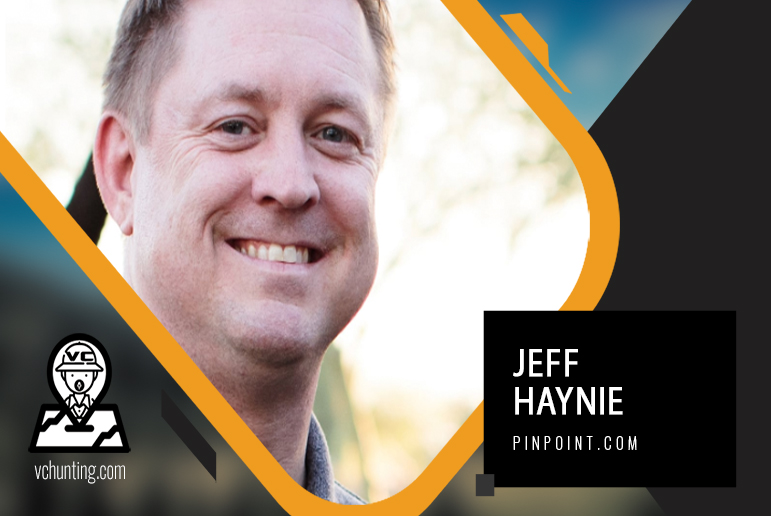
Responses